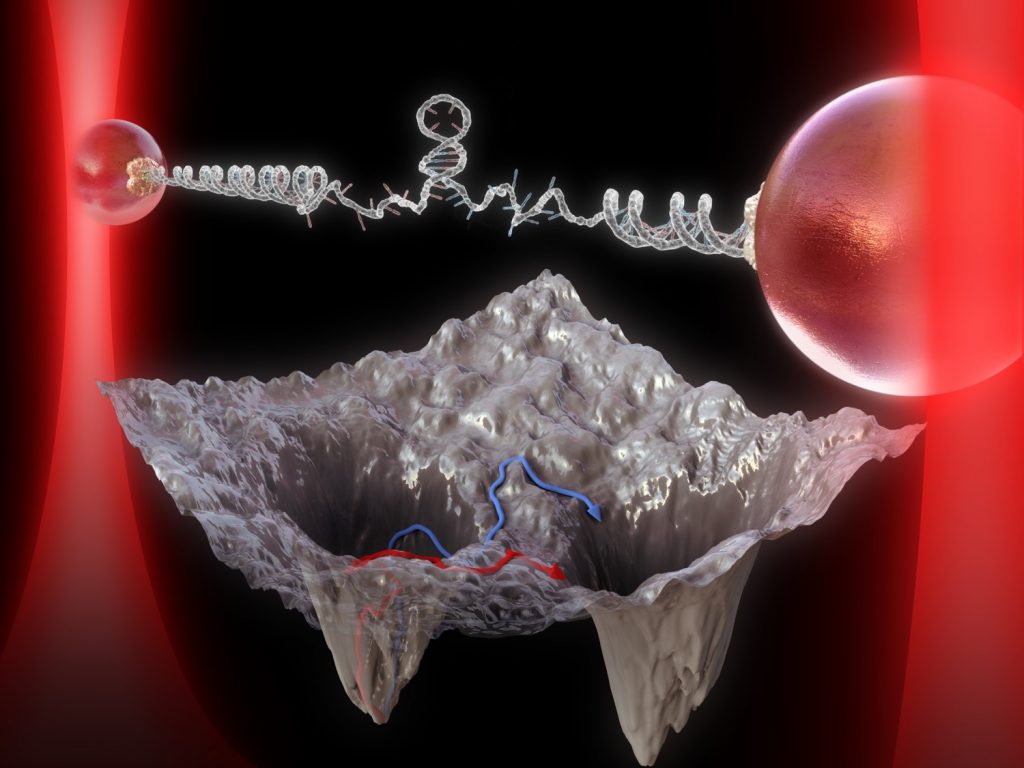| Submitted by: | Noel Hoffer |
| Collaborator: | Michael Woodside |
| Department: | Physics |
| Faculty: | Science |
This image shows a single DNA molecule being unzipped using laser tweezers. The lasers act like ‘tractor beams’, pulling the micron-sized beads biochemically linked to the ends of the molecule, toward the optical focal point. By moving the laser beams apart, we apply tension to the ends of the molecule and break the base-pair bonds holding the DNA molecule together. The formation of base-pairs is studied by reversing this process. Our laser tweezers achieve exquisite sensitivity, observing events with near-atomic spatial resolution. These experiments allow us to observe directly the microscopic motions made by individual bases as they search for each other to pair up and form the iconic double-helix of DNA. The physics of the process, which involves sliding over an energy landscape that represents all possible configurations of the DNA, is illustrated below. Our measurements provide a direct visualization of the paths taken over the barrier in the landscape that must be crossed when zipping or unzipping base-pairs. These paths, which have never been seen before for any biological molecule, provide crucial information about the microscopic mechanisms governing how complex structures form in biological molecules, with important implications for understanding the relationship between structure, biological function, and disease.

